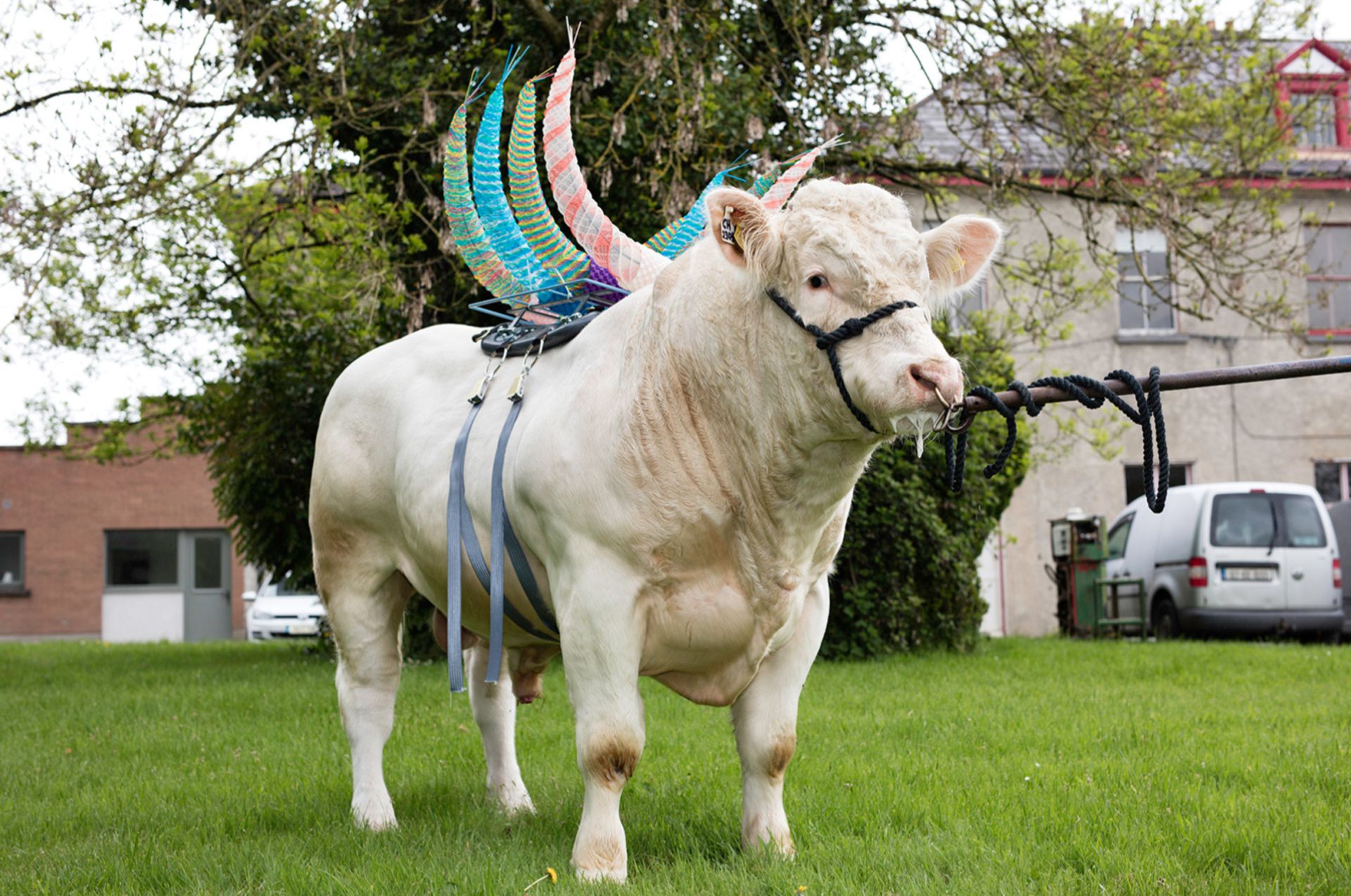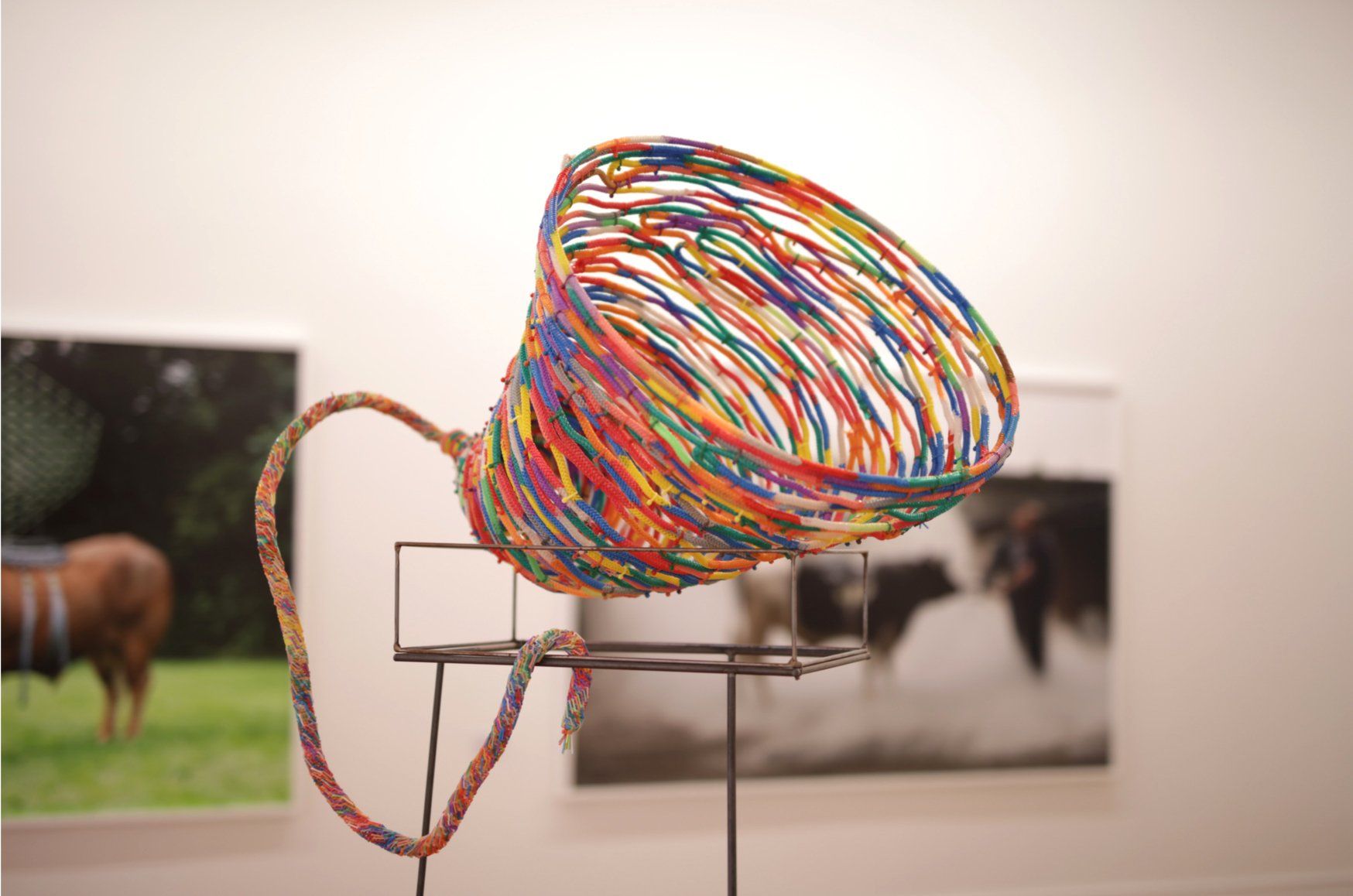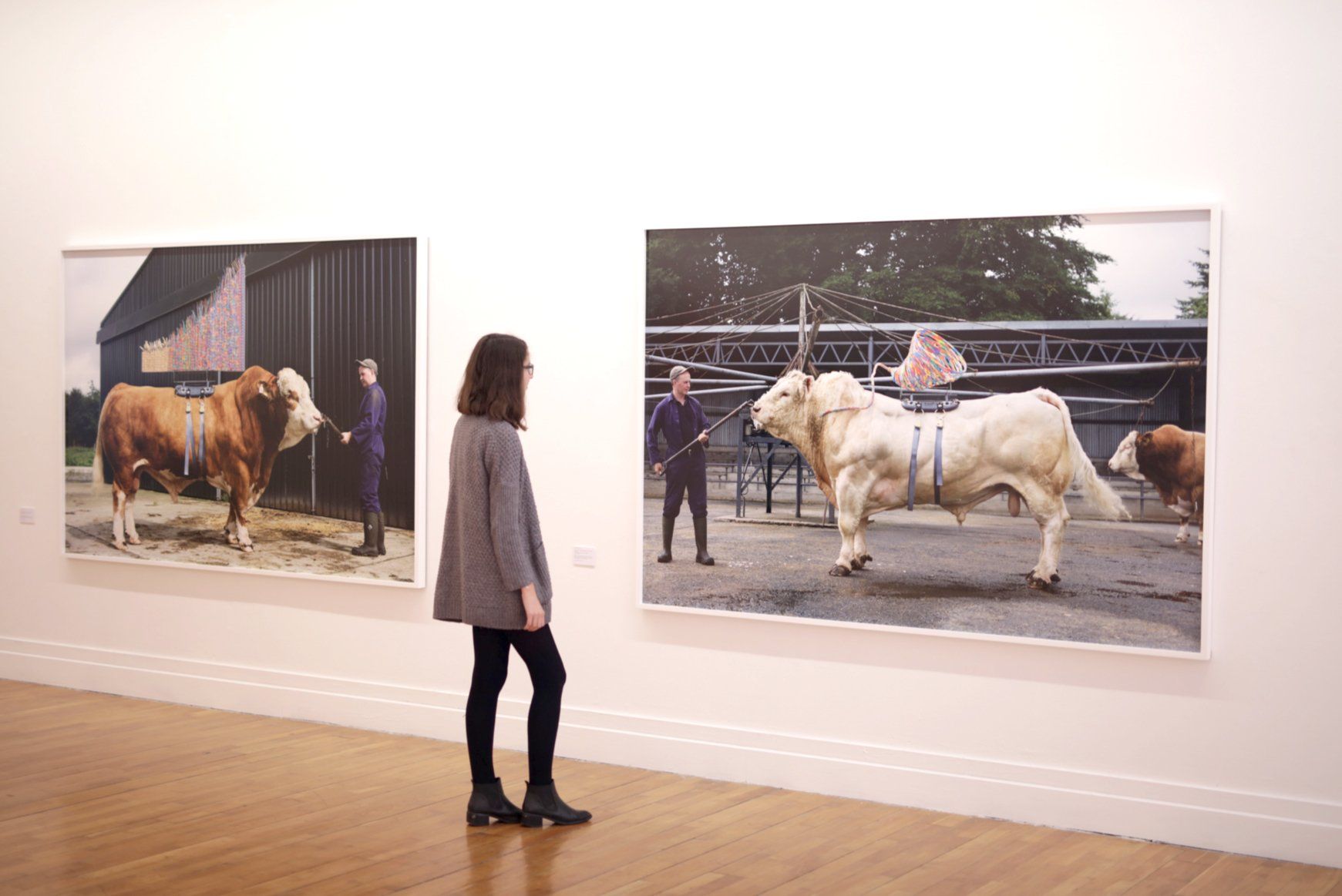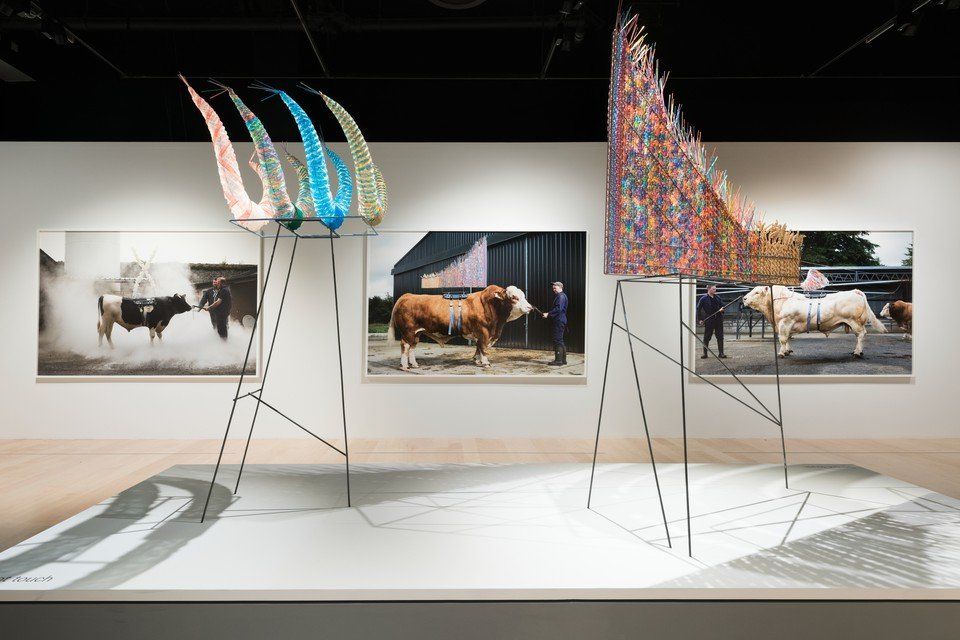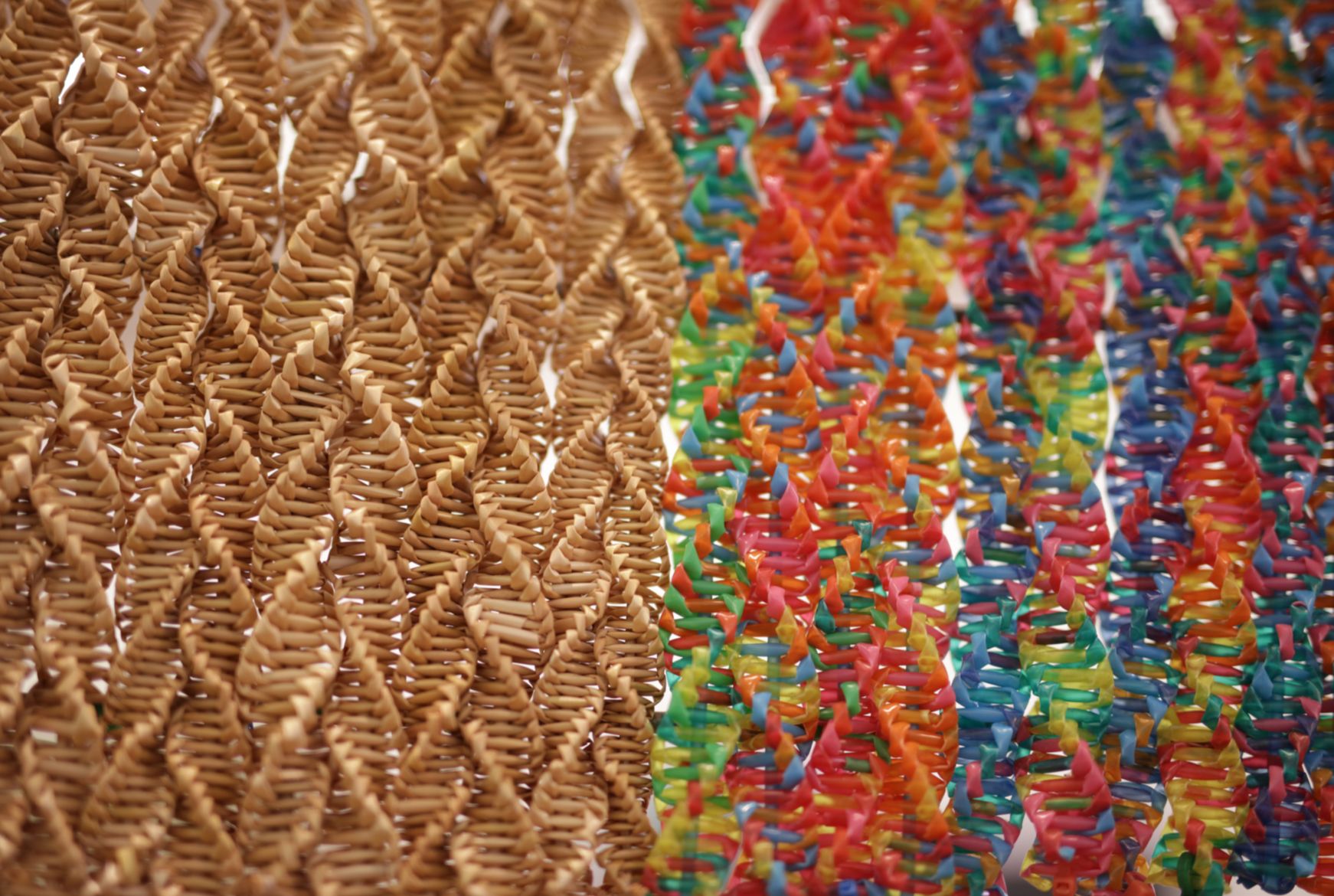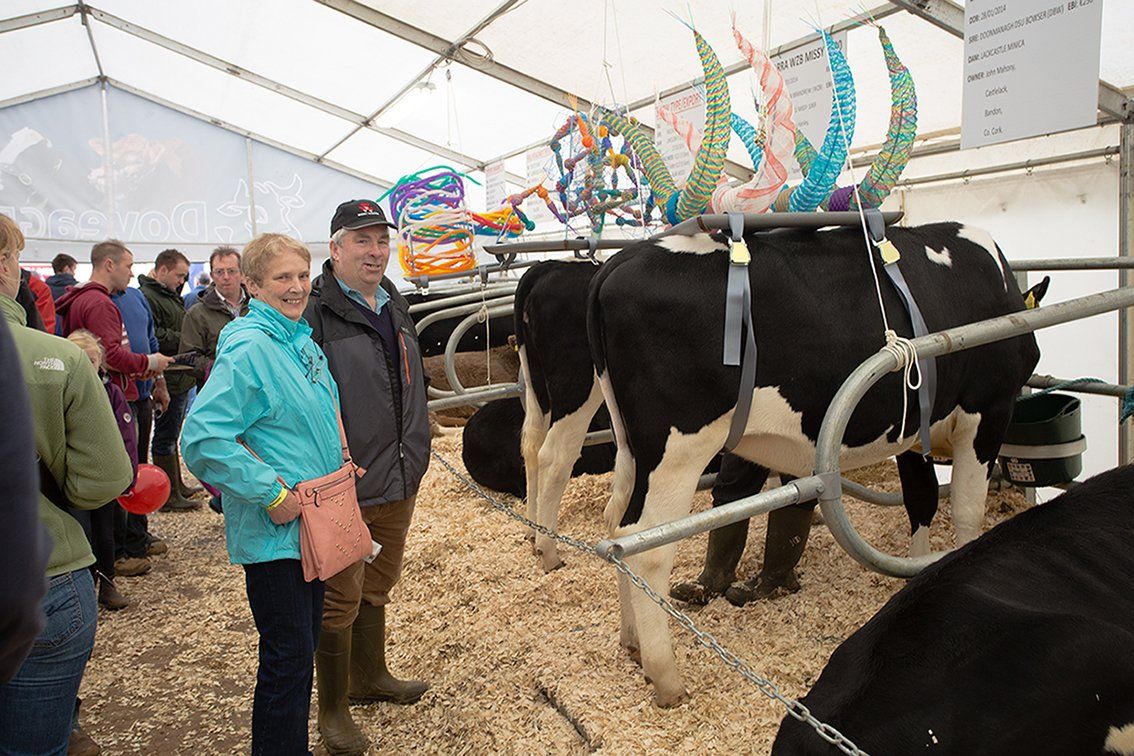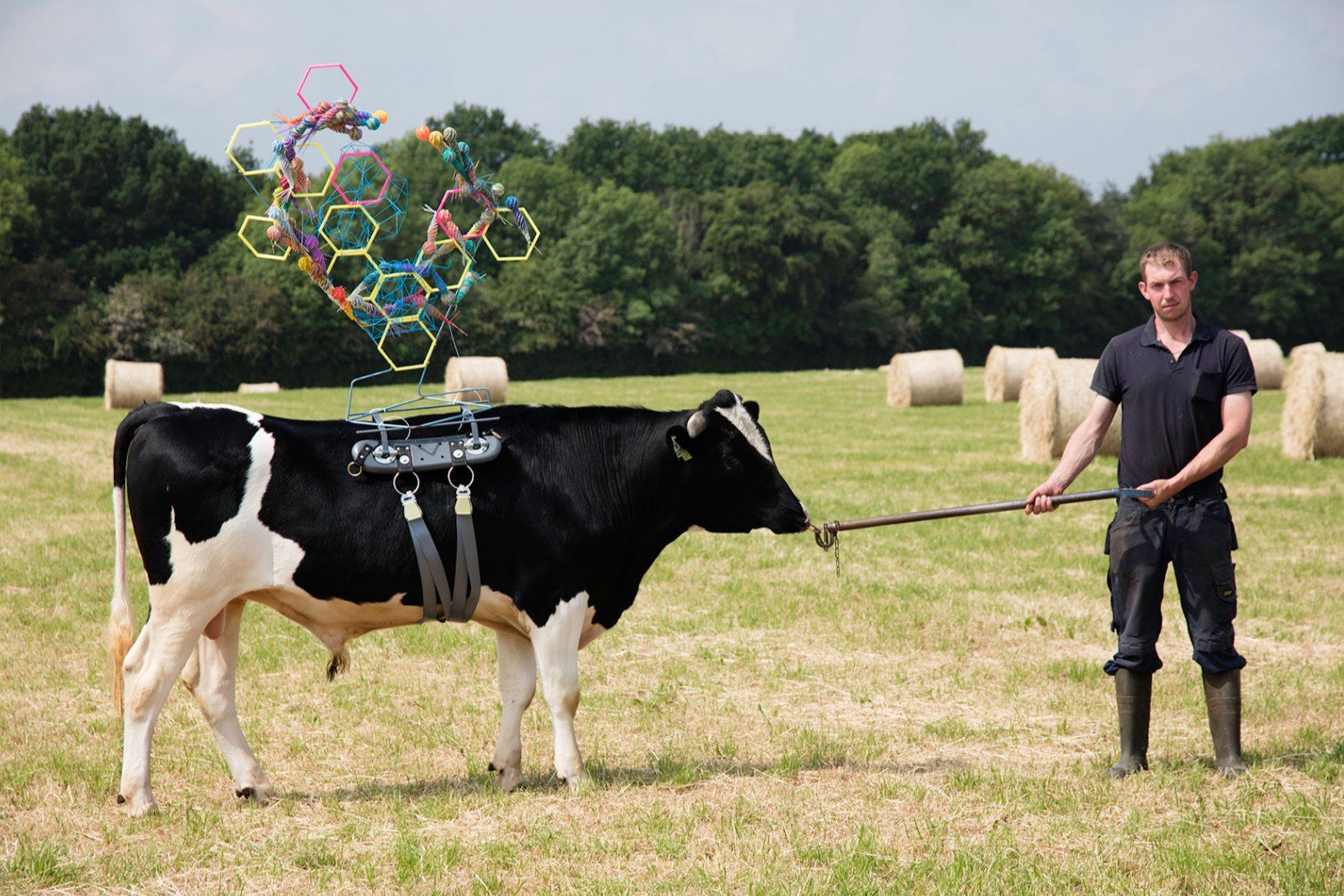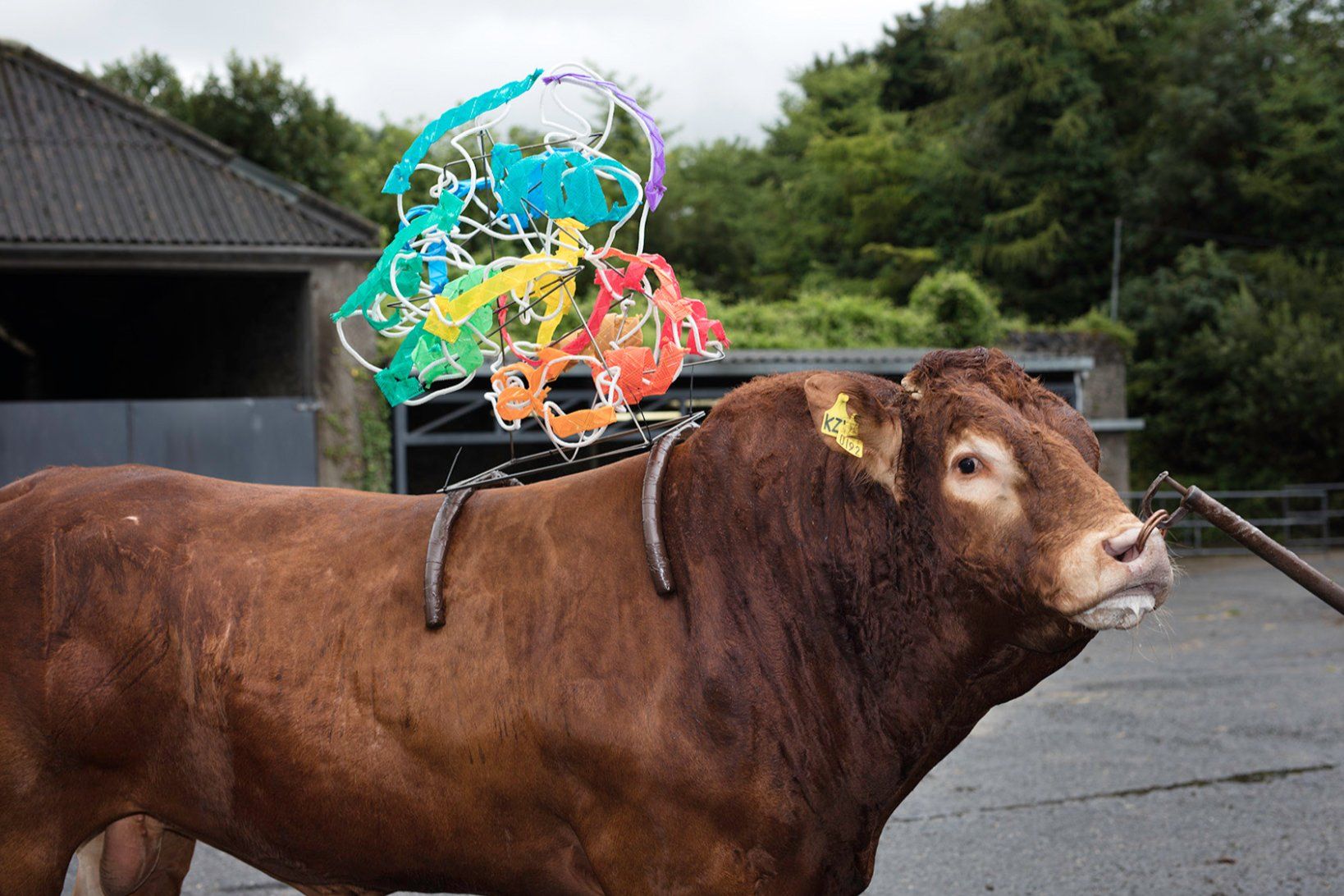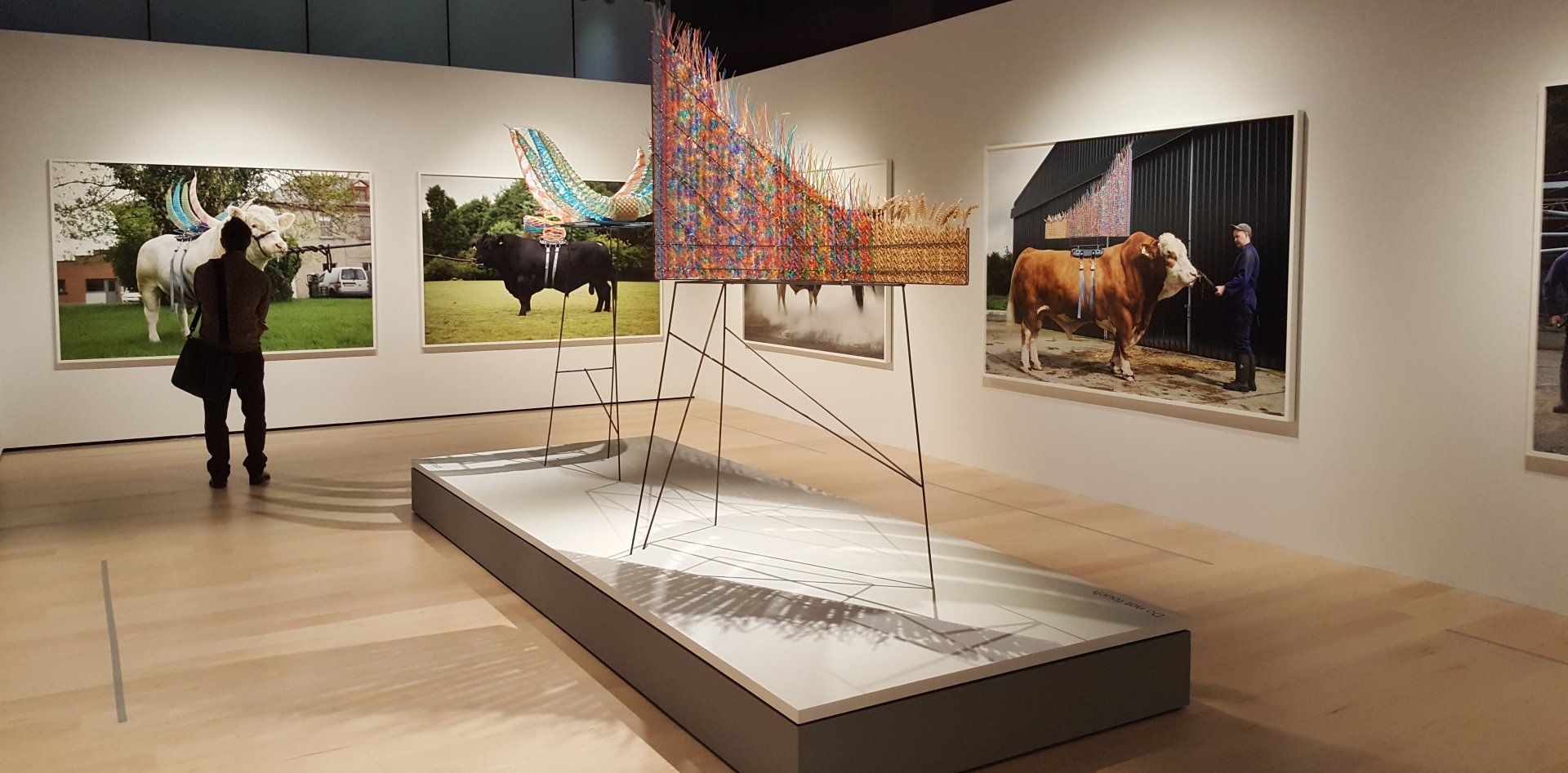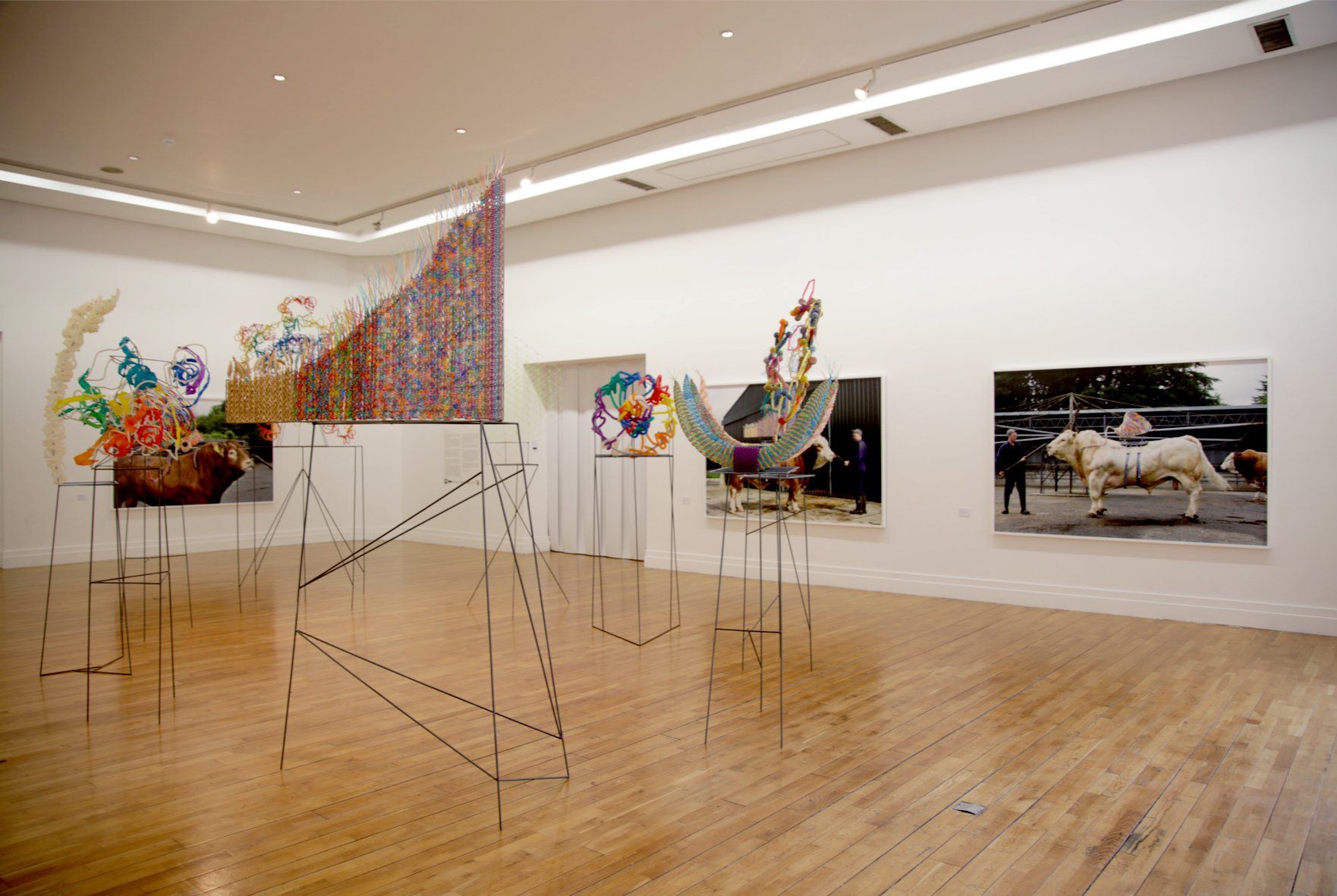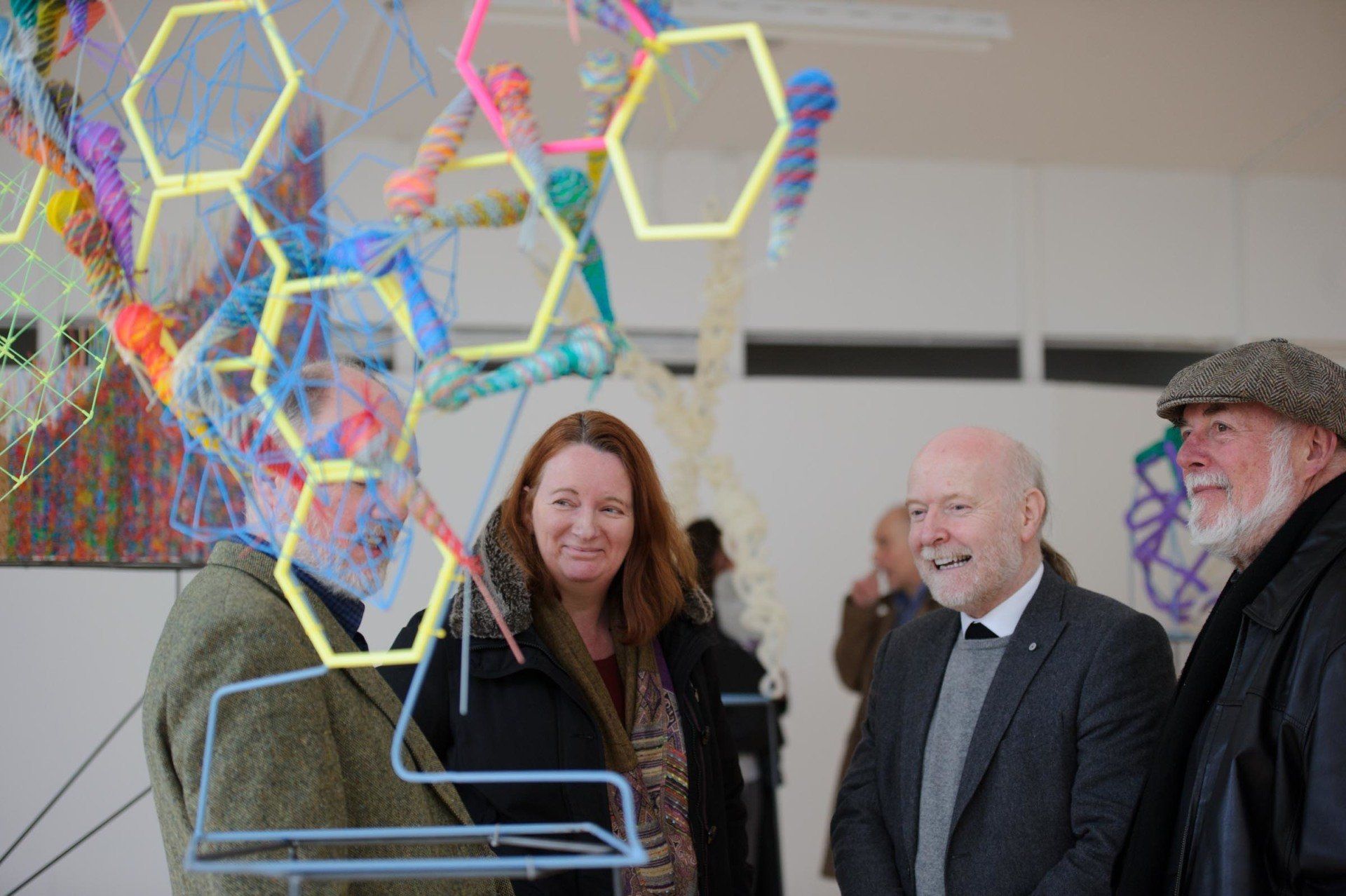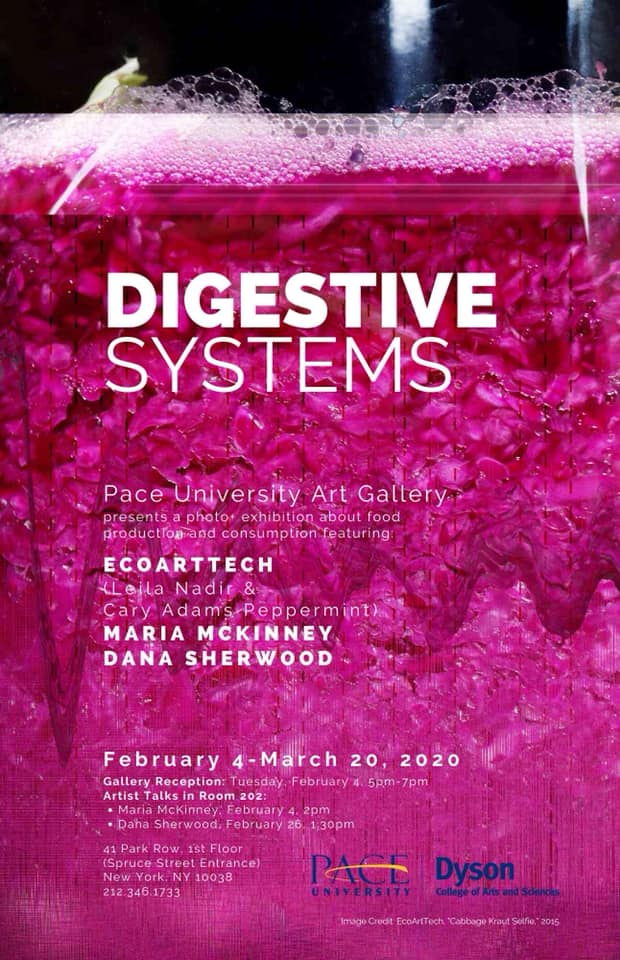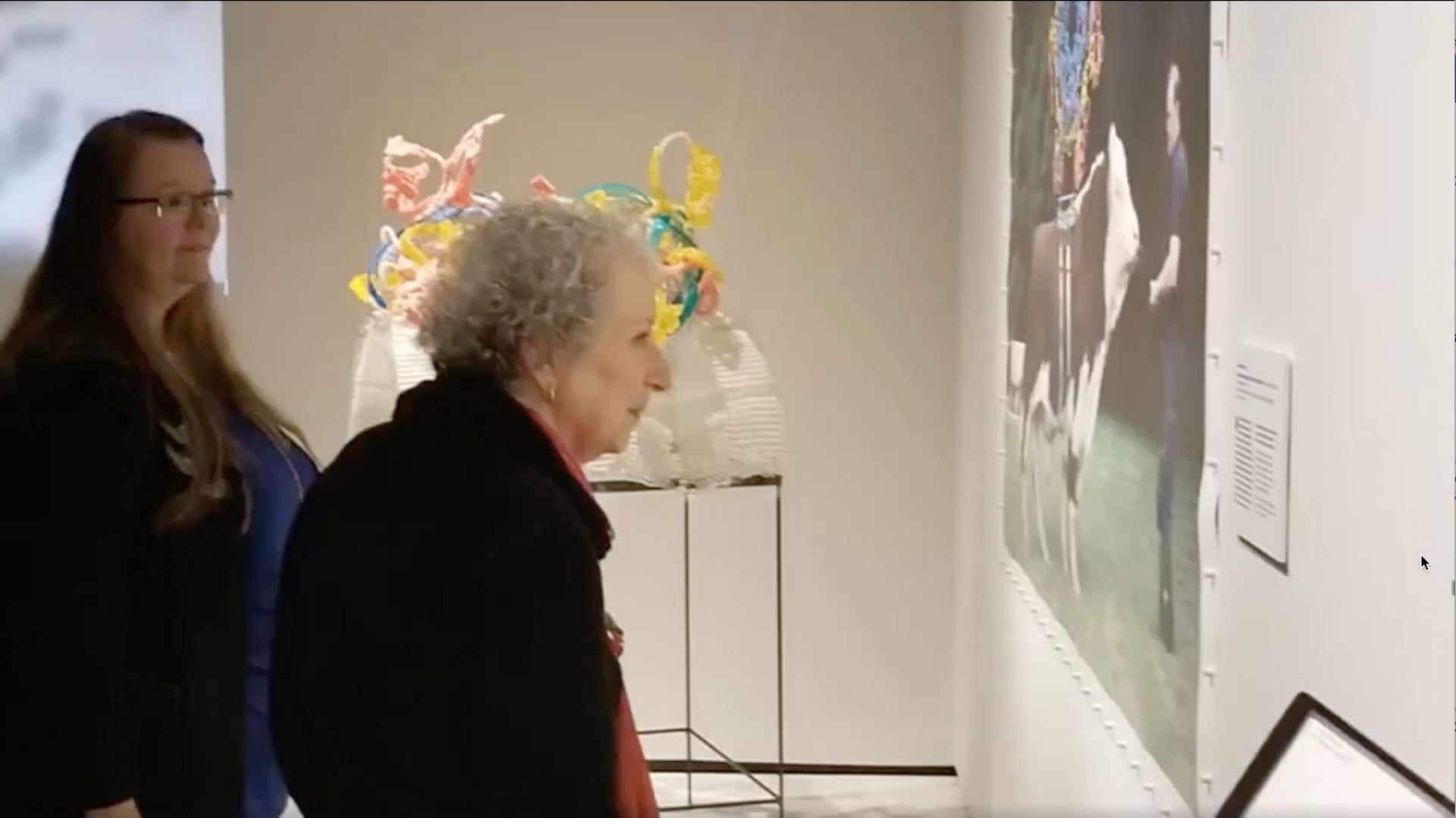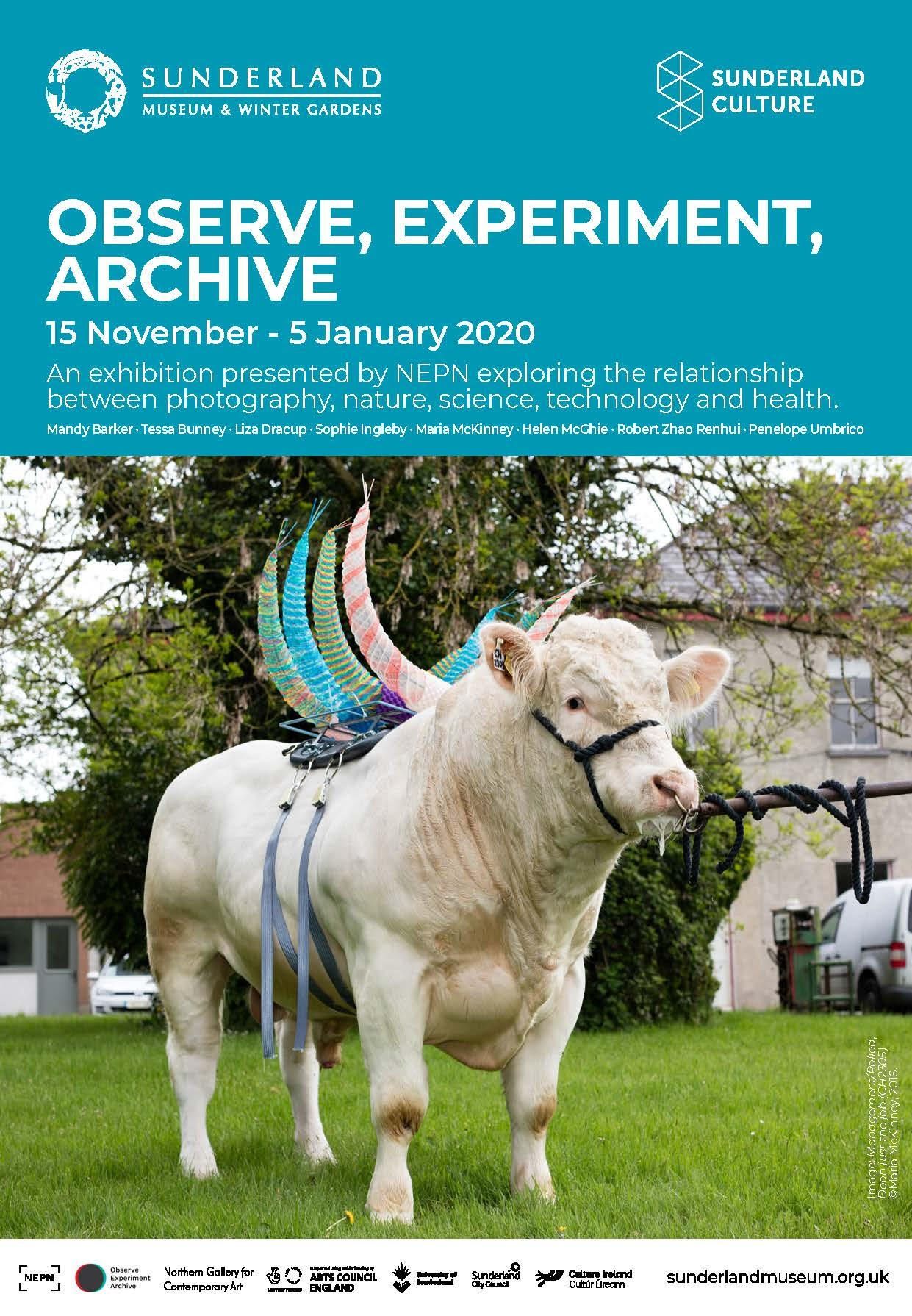Maria MckinneyFarming in the age of biotechnology
UCD College of Science Artist in Residence
All images © Maria McKinney
Weaving pagan corn dolly motifs with genetic patterns, 'SIRE' by Maria McKinney reveals the elaborate processes behind the production of the meat and milk we consume
In pre-Christian Europe, humans performed pagan rituals in an attempt to influence the future behavior of nature. Part of this practice involved making idols called corn dolls; these objects were made from binding strands of wheat or corn into a variety of intricate shapes and patterns.
In contemporary society, the branch of knowledge known as genomics has given scientists the true ability to control nature in the future development of animal and plant species, thanks to an understanding of the complex patterns held within the structure of DNA.
Selecting things that already exist in the world, Maria uses a process of manipulation in response to their form, as well as their unseen properties. In an environment where the unseen (microscopic, atomic, digital, genetic) is becoming ever more manipulable, which in turn affects our relationship to the physical, Maria's is a gesture to contemplate the unrevealed systems that constitute our daily reality and coax visual stimulus from within their structure to the surface.
Maria McKinney explains how she made the works for 'SIRE' at RHA Gallery
Humans have bred cattle for thousands of years. Maria McKinney's SIRE presents a new chapter in this long history, the role of genetics in contemporary cattle farming.
This series of large photographic portraits of bulls was taken at the Irish stud farm Dovea Genetics. The animals are wearing intricate sculptures on their backs, woven from artificial insemination straws using traditional corn-weaving techniques. The Sculptures represent different characteristics that are currently being bred into cattle, such as being hornless, having extra muscle growth and being able to withstand changes in climate. Genetic screening has sped up the process by which farmers can identify which bulls' semen will be used to father, or sire, their herd.
McKinney researched the project alongside geneticist David McHugh, veterinary scientist Micheal Doherty and Donagh Berry (Teagasc) as well as working closely with rural agricultural communities. SIRE reveals the elaborate processes behind the production of the meat and milk we consume, reflecting on our complicated relationship with the natural world.
Dairy farmer Jamie Costin reviews 'SIRE' on Imeall TG4
Maria McKinney is an artist based in Dublin. She was awarded the UCD College of Science Artist in Residence in 2016. Her work explores the impact of human intervention on the natural world, often bringing contemporary materials and traditional craft techniques together. She was awarded a Wellcome Arts Award in 2015 to produce SIRE.
Michael Doherty is Dean and Professor of Veterinary Clinical Studies at UCD School of Medicine. His research includes dairy-herd health and the merging of folkloric and scientific veterinary practice in rural communities. For SIRE he advised Maria McKinney on historical and contemporary cattle farming, and issues of animal welfare.
David McHugh is Professor in Genomics and Associate Dean of Research at UCD School of Agriculture and Food Science. His werk involves the study and teaching of animal genomics and its relationship to the food chain. For SIRE he provided Maria McKinney with insight into the use of genetics in cattle breeding.
Genetics is responsible for approximately half the observed changes in animal performance in well structured breeding programs. The nine photographs/objects consider the newly proposed breeding objectives to achieve the cow of the future.
Above Photographs: 125cmx225cm
All images © Maria McKinney.
All images © Maria McKinney.
For more information or to commission work by Maria McKinney
email mckinneymaria@googlemail.com
Breeding Objectives
1. Produce a large quantity of high value output (i.e. milk and meat)2. Good reproductive performance
3. Good health status
4. Good longevity
5. Does not eat a large quantity of food
6. Easy to manage (i.e. easy calving, docile)
7. Good conformation (over and above reflective of health, reproductive performance and longevity)
8. Low environmental footprint
9. Resilient to external perturbations
SIRE continues to be exhibited locally, nationally and internationally

